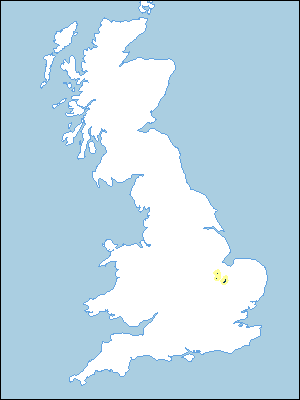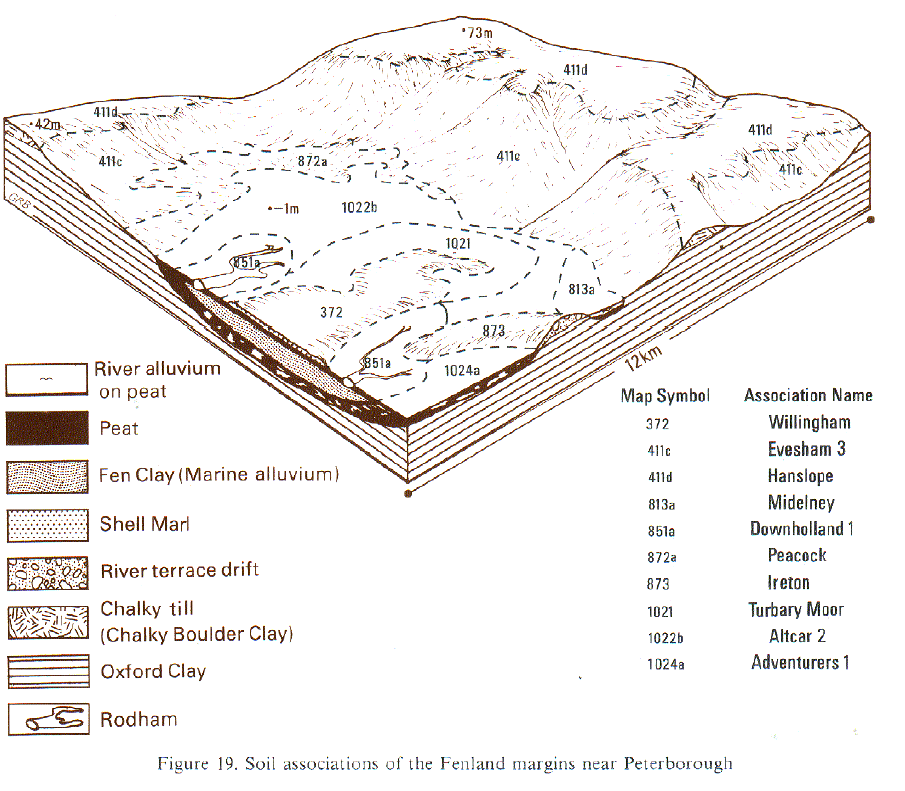
Soil Associations
0873 IRETON
Soil and site characteristics
Permeable humose coarse and fine loamy soils associated with humose calcareous coarse loamy over sandy soils. Groundwater controlled by ditches and pumps.
Geology
Glaciofluvial drift
Cropping and Land Use
Cereals, sugar beet and potatoes.
Component soil series
| Subgroup | Series name | Percentage | WRB 2006 link |
|---|---|---|---|
| 8.73 | IRETON | 50% | Luvic Mollic Gleysols |
| 8.71 | FORDHAM | 20% | Mollic Gleysols |
| 8.72 | CLAYHYTHE | 15% | Calcaric Mollic Gleysols |
Covers 56 km2 in England and Wales
Soilscapes Classification
| 23 |
Loamy and sandy soils with naturally high groundwater and a peaty surface |
0873 IRETON
Detailed Description
This association covers 54 km² of nearly level land at, or a little above, sea level near Chatteris in the Cambridgeshire Fens and also east of Peterborough. It consists of permeable coarse loamy or fine loamy over sandy soils formed in glaciofluvial deposits from which a former peat cover has now largely wasted. The arable fields, largely without hedges and trees, are drained by pumps maintained by internal drainage boards to remove unwanted groundwater from the ditches to the Fenland rivers. The coarse loamy Ireton series, which belongs to the argillic humic gley soils and so has humose topsoils, is dominant and, together with Swanwick series, covers about half the association. The immediate subsoil of Ireton series is generally pale and leached and passes downwards into a strong brown or yellowish brown clay-enriched zone. The deep subsoil is usually stony or gravelly sand. The topsoil of the similar Swanwick series remains dark though non-humose, in spite of greater loss of organic matter. A further third of the land consists of the Fordham series, typical humic gley soils, of similar texture but without a clay-enriched layer and the Clayhythe series, calcareous humic gley soils, with a fine loamy upper layer contrasting with a sandy subsoil. There are minor areas of the peaty Adventurers' series on the lowest ground.
Most of the association is in one block east and north-east of Chatteris. Here the upper coarse loamy subsoil of the Ireton series often contains appreciable silt, is compact and dense and varies in thickness over short distances. Ice-wedge cracks infilled with loamy material occur in a polygonal pattern and show differential crop growth in summer. These soils were previously mapped as Fordham series. Whitish, highly calcareous, silty layers occur in the deep subsoil in places. On the lowest land Adventurers' and the strongly acid Mendham series occur and here associated Ireton soils are more acid than usual. At the margins of the glaciofluvial drift, especially on the parcels east of Peterborough, where it thins over the underlying clay, Duckpitand Peacock series with clayey subsoils occur. Here Fordham soils are uncommon and there is no peat but soils on the lowest ground are again strongly acid. The proportion of Swanwick soils is greater near Crowland than in Farcet Fen. Near Thorney there is a gradation from humose Ireton series to Swanwick series across the gently sloping surface.
Soil Water Regime
Being permeable and lying within arterial pumped drainage districts, almost all the soils are now well drained (Wetness Class I). Locally, where water levels are kept high by temporary stop boards, some soils in low places are waterlogged for varied periods. As most of the soils are coarse loamy with subsoils becoming coarser with depth they are only moderately water-retentive. The water holding capacity partly depends on the amount of organic matter in the topsoil so non-humose soils such as Swanwick series are correspondingly more droughty than similar humose soils. The soils are moderately droughty for most crops but slightly droughty for deep rooting crops like sugar beet or early-ripening crops like oilseed rape. They are very droughty for grass.
Cropping and Land Use
The soils are easily worked and are accessible in winter after dry spells. The land is mainly arable with winter cereals, sugar beet, some field vegetables and potatoes as the main crops, the last needing irrigation to yield well. The compact subsoil in the Ireton series and the occasional strongly acid layers in the component peat soils restrict rooting. Some land is worked for gravel in Langwood Fen east of Chatteris.
0873 IRETON
Distribution Map
 |
Note that the yellow shading represents a buffer to highlight the location of very small areas of the association.
Keys to component soil series
Eastern Region
 |
Typical Landscapes
Eastern Region
 |
All information Copyright, Cranfield University © 2024
Citation: To use information from this web resource in your work, please cite this as follows:
Cranfield University 2024. The Soils Guide. Available: www.landis.org.uk. Cranfield University, UK. Last accessed 26/04/2024
